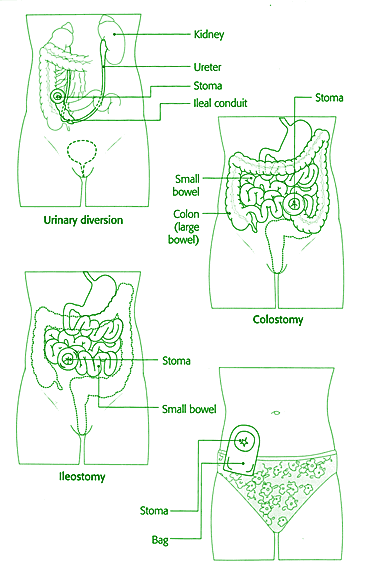|
Urinary diversion, ileostomy and
colostomy
• If your bladder and urethra have to be removed in an exenteration
procedure, or you have a urinary fistula that cannot be closed, your
surgeon will make a passage (called a conduit) from a section of your
small bowel. The flow of urine is redirected from the kidney so that
it drains through this passage. An opening called a stoma is made in
the abdominal wall, and the urine drains continuously into a bag that
is worn on the abdomen. Sometimes 'continent' urinary diversions can
be made. These collect urine like a bladder behind the abdominal wall
and are emptied by passing a catheter into the stoma.
• If some of your bowel has been removed, or you have a bowel blockage
or rectovaginal fistula, you may need an ileostomy or a colostomy. The
stoma is made in the abdominal wall, and this allows the contents of
the bowel to be collected in a bag that is worn on the abdomen. Depending
on your health, the reason that the stoma was made and what part of
the bowel has been removed, you may be able to have the ileostomy or
colostomy closed some months later. However most stomas created for
patients with gynaecological cancer are permanent.
• If you have urinary diversion and/or an ileostomy or colostomy,
you will be given counselling before the operation, and help afterwards
until you are able to manage the stoma(s) yourself.
|
|
 |




